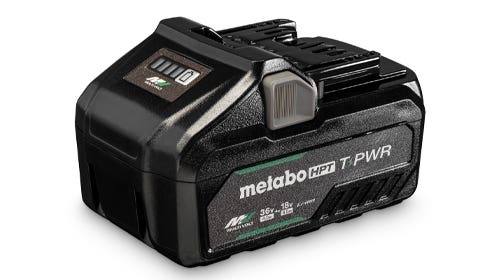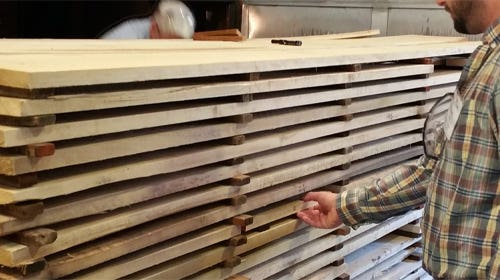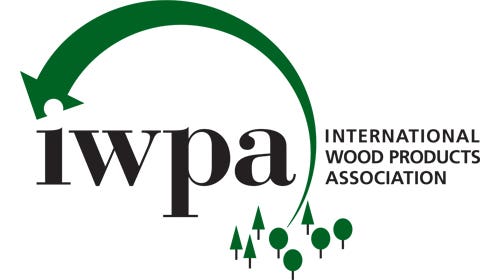White oak growth is considered a trend
Quartersawn sales seen as strong in a time when market conditions have been stagnant for other woods {loadposition position10} As wood markets attempt to rebound, white oak appears to be…
Quartersawn sales seen as strong in a time when market conditions have been stagnant for other woods
{loadposition position10}
As wood markets attempt to rebound, white oak appears to be one of the brighter stories. Although sales aren't robust, dealers report steady sales of the species with prices holding firm. That is certainly optimistic news considering the depressed housing market.
"Probably for us, one of the hottest woods going is white oak, mostly quartersawn," says Dave Harris of Parkerville Wood Products, a retailer and wholesale supplier in Manchester, Conn. "Sales of it are good and some of our largest projects in the last year have been white oak. We're doing a lobby of a law firm in downtown Hartford with it. It's hard to determine what establishes trends, but it is a trend.
"I don't know what to attribute it to. In some cases, the design is specified by architects before it gets to us. But it is just a real trendy thing right now. I would say quartersawn white oak right now is No. 1 or No. 2. We're doing a lot with cherry and quartersawn cherry right now, too, but white oak is right up there."
White oak (Quercus alba) grows from eastern Canada, south to Florida and Texas and throughout the Midwest. The tree reaches heights up to 120' with a trunk diameter of 2' to 3'. The narrow sapwood is white to light brown in color, while the heartwood ranges from light to dark brown. Quartersawn lumber often produces bright flake patterns that are sometimes referred to as butterfly or tiger ray.
Sam Talarico, owner of Talarico Hardwoods in Mohnton, Pa., has specialized in selling old-growth white oak for nearly 40 years. Most of his white oak is now imported from forests in Germany and old European estates since the domestic supply of old-growth has all but dried up.
"I'm going to England, Scotland, Germany, Slovenia - there are certain areas where white oak only grows well," Talarico says. "The Spessart white oak [from Germany] is probably the best white oak in the world and that is because the color is so perfect. There is no mineral in the soil so what you have is a straw-colored wood that has no mineral streaks and it has a super-tight grain.
"The Arts and Crafts guys want the flake, so I cut the best logs that have a lot of flake. I quarter the whole log if it is that kind of a log. If it is not that kind of a log, I'll rift and quarter it, and if it is a kind of a log that doesn't have any figure, I'll just rift-cut the whole thing and get wide rift out of it. I know how the figure is going to be before I even open it by reading the medullary rays. I've learned that by trial-and-error by cutting white oak all my life."
For centuries, white oak has also been used for building wooden boats, and is often sold green because of its bending properties.
"I'd say that is where the bigger part of where our white oak goes - to the boatbuilders," says Carl Mahlstedt of Goosebay Sawmill and Lumber in Chichester, N.H. "The percentage of the quartersawn that we sell is less than 20 percent. White oak will take a little more abuse than a piece of mahogany or cedar, maybe bending it for rib stock. I think the ability of white oak for bending is better than a lot of other lumber."
White oak has a course texture, is usually straight-grained, heavy, strong and durable and has a specific gravity of .60. Generally, the wood is easy to work with; it machines and glues well, is easy to carve, takes a fine finish, but tends to split when nailed. The wood dries fairly slowly and may occasionally check or crack.
Retail prices for kiln-dried, 4/4 FAS flat-sawn white oak, surfaced on two sides, ranged from $3.70 to $4.50/bf in the Northeast; $3.30 to $3.95/bf in the Southeast; $3.60 to $4.10/bf in the Midwest, and $3.85 to $4.25/bf in the West.
Retail prices for 4/4 FAS quartersawn white oak are approximately $1.15 to $2/bf higher.
Wholesale prices for kiln-dried 4/4 FAS white oak ranged from $3,300 to $3,650/mbf in the Northeast; $3,100 to $3,450/mbf in the Southeast; $3,250 to $3,550/mbf in the Midwest, and $3,550 to $3,850/mbf in the West.
This article originally appeared in the September 2009 issue.






